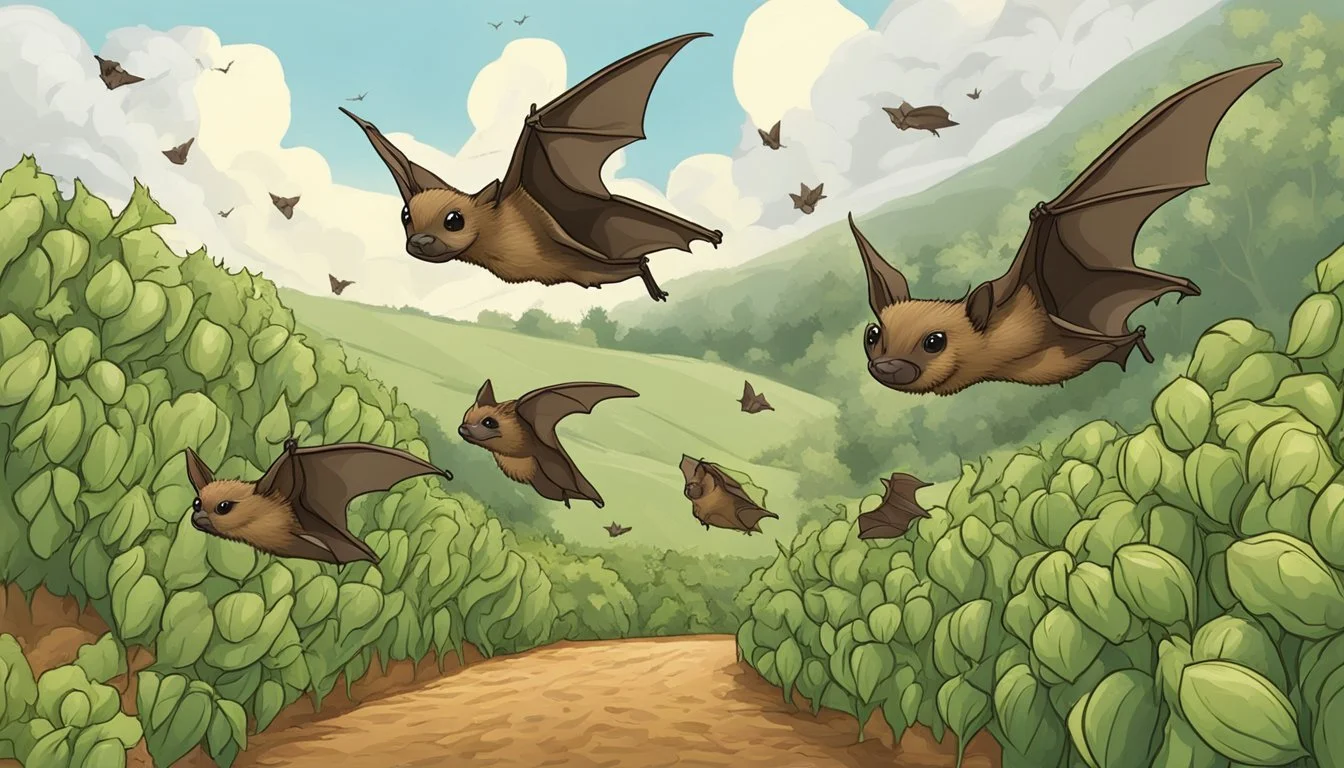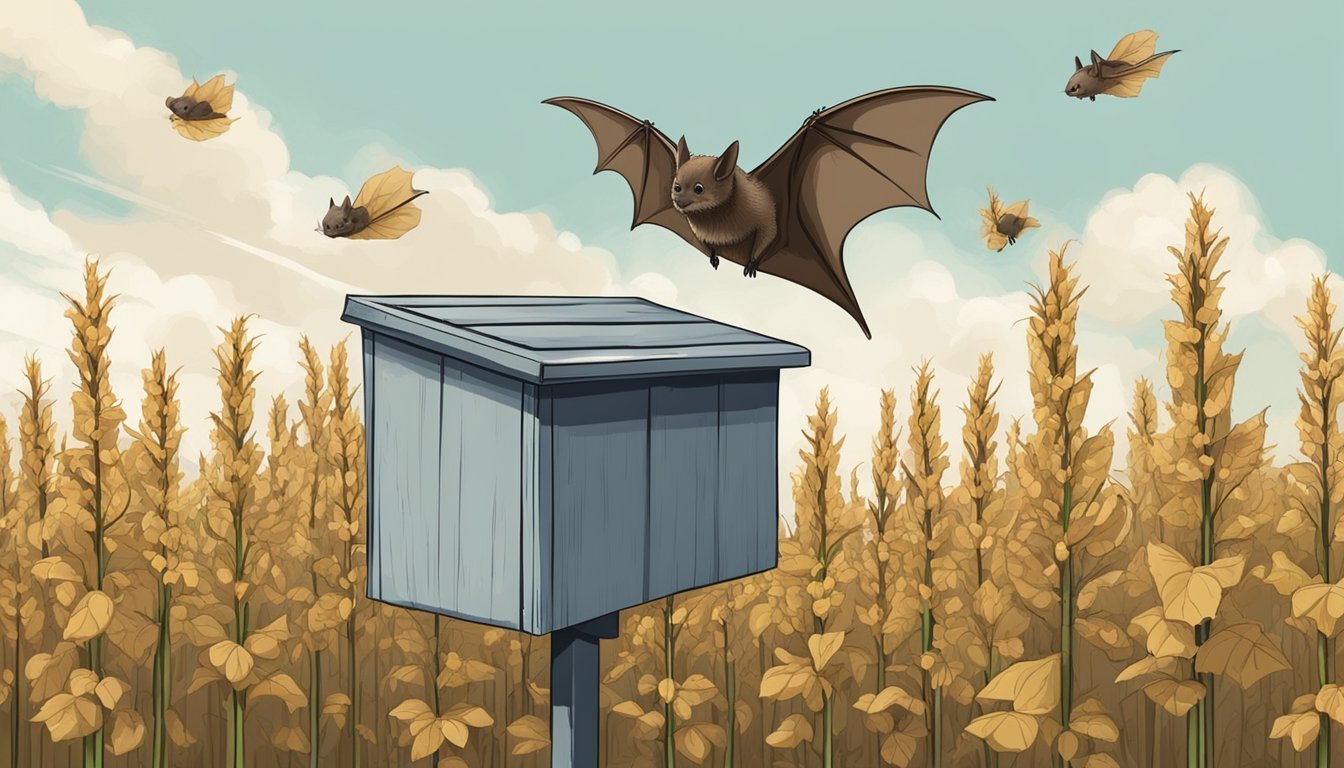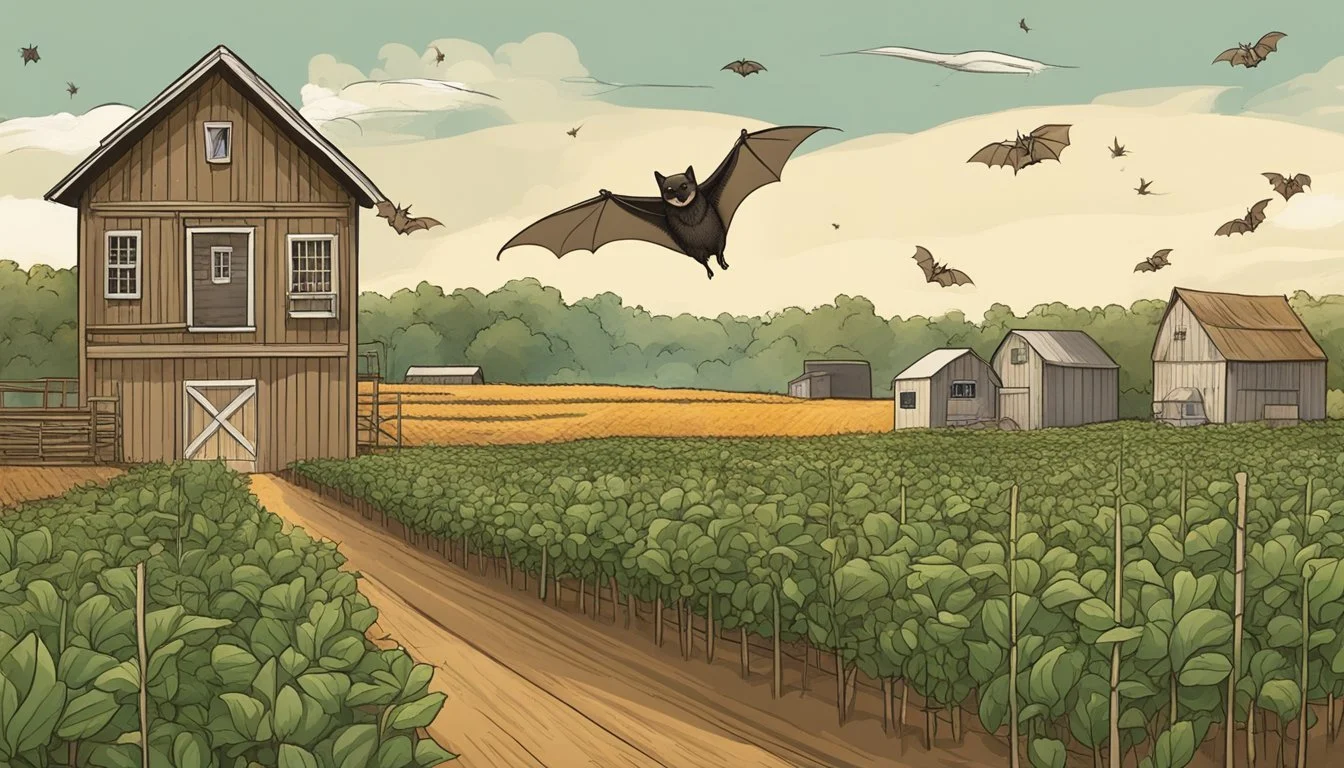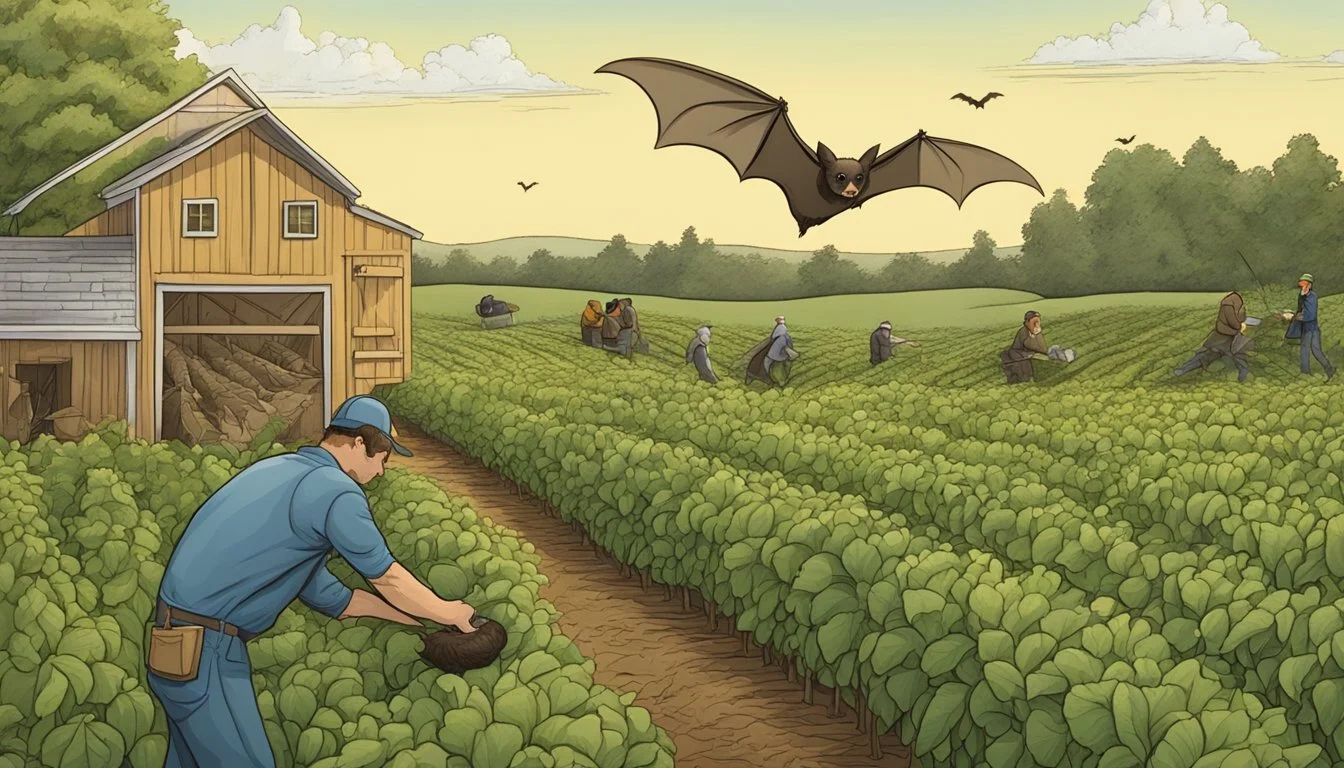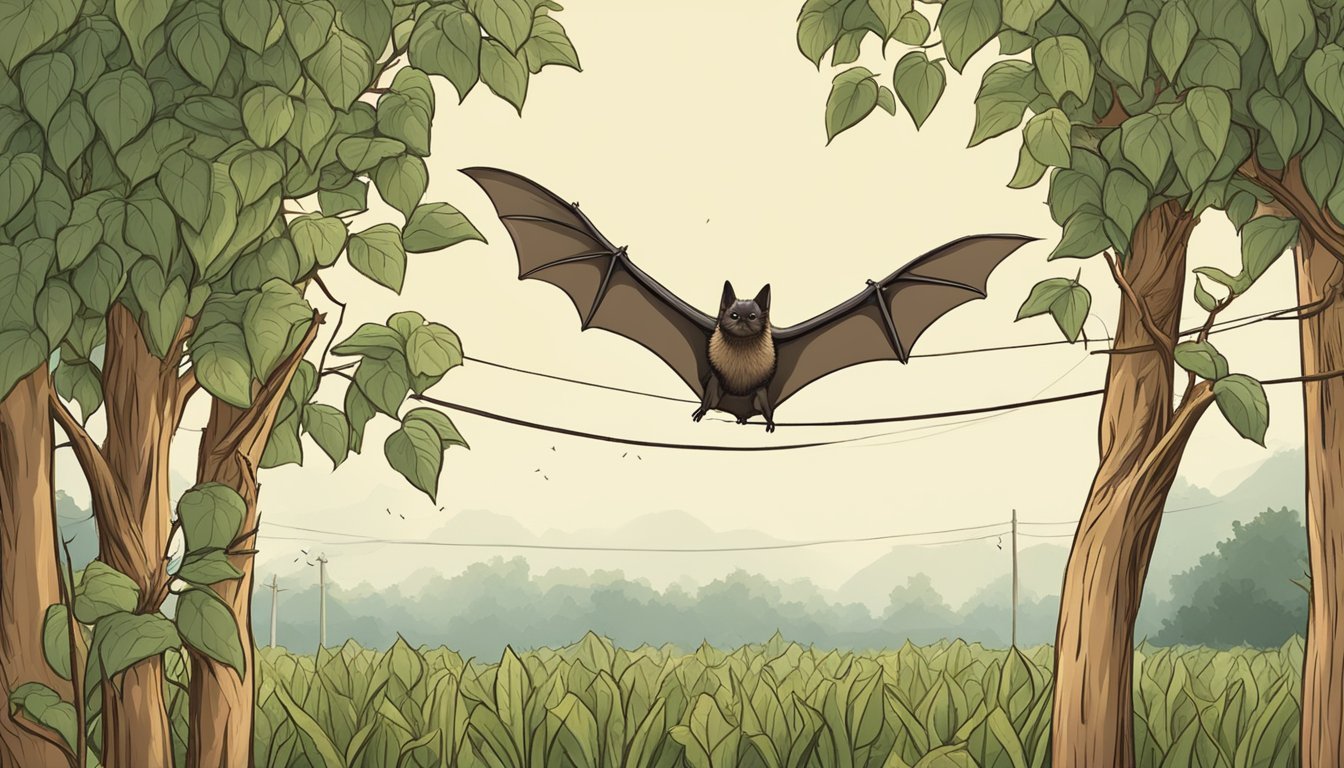Protecting Crops from Little Brown Bat
Efficient Strategies for Farmers
The little brown bat, known scientifically as Myotis lucifugus, is an important night-time predator of insects, including those that can potentially damage agricultural crops. These bats consume an impressive variety of night-flying insects, which includes crop pests. Their role in the ecosystem as pest controllers is crucial, as they help maintain the balance and health of crop ecosystems by natural means. The decline in the little brown bat population, primarily due to the devastating effects of white-nose syndrome, a fungal disease, has raised concerns over the potential increase in crop-damaging insects that bats would typically help control.
Protecting crops from the damage caused by insects is a major concern for farmers and agricultural industries. The disruption in natural pest control due to the decreased number of little brown bats has sparked discussions on the need to protect these creatures to maintain their ecological role. Protecting and managing little brown bats not only benefits the natural environment but can also have significant positive implications for agriculture. By understanding the habits, habitats, and threats faced by little brown bats, strategies can be designed to conserve them, ensuring they continue to thrive and offer natural protection for crops.
Effective bat conservation requires a multifaceted approach, including habitat preservation, disease management, and research into bat behavior and ecology. The U.S. Fish & Wildlife Service offers insights into the range and habits of the little brown bat, providing a foundation for developing protective measures for this species. Agricultural methodologies that are bat-friendly can potentially reduce the reliance on chemical pesticides, thus fostering an organic and sustainable approach to crop protection. Increasing public awareness on how integral these small mammals are to agriculture and natural ecosystems is also crucial in mobilizing conservation efforts.
Overview of Little Brown Bats
Little brown bats (Myotis lucifugus) are a small insectivorous species playing a critical role in controlling insect populations across North America.
Species Description
The little brown bat, or Myotis lucifugus, is a species of microbat that has a distinct glossy brown fur which can vary from brown to reddish and even golden tones. This bat is recognized for its echolocation ability, which it uses to navigate and hunt at night. With a wingspan typically ranging from 22 to 27 cm, these bats are fairly small yet adept flyers.
Habitat and Distribution
Myotis lucifugus is widely distributed across North America, from Alaska and Canada, through the United States as far south as Mississippi. Their habitats include caves, tree cavities, attics, and bat houses. Little brown bats exhibit migrations dependent on seasonal changes, typically hibernating in caves or cave-like structures in colder months.
Diet and Foraging Behavior
Primarily nocturnal, the little brown bat emerges at dusk to forage for prey, mainly consisting of insects like mosquitoes and moths. Their insectivorous diet helps control insect populations, which is beneficial for crop protection. The bats use echolocation to detect and capture prey, consuming up to half their body weight in insects each night, which is vital for their energy needs.
Ecological Role and Conservation Status
The little brown bat plays a crucial role in maintaining healthy ecosystems, especially as a natural pest control agent, but faces serious conservation challenges that threaten its survival.
Importance in Ecosystems
Little brown bats are insectivores, consuming large quantities of night-flying insects, which include crop pests and mosquitoes. A single little brown bat can eat up to 3,000 mosquito-sized insects in one night. These bats contribute significantly to the balance of ecosystems, aiding in both forest and wetland health. They are important pollinators in some ecosystems and their guano enriches soil, making it more fertile for plant growth.
Endangered Status and Threats
Currently, little brown bat populations are endangered and suffering from high mortality rates due to a fungus that causes white-nose syndrome. This disease has been decimating colonies across North America. Conservation and management efforts are aimed at protecting their natural habitats, including forests, wetlands, and ponds, which are critical for their survival. The decline in bat populations impacts natural resources, as it could lead to increased pesticide use on farms. Efforts to address habitat loss and minimize human disturbance are essential in supporting the remaining survivors and preventing the extinction of this threatened species.
Reproduction and Life Cycle
Understanding the reproductive patterns and growth stages of the little brown myotis (Myotis lucifugus) is essential for implementing strategies that adequately protect crops while conserving bat populations. The life cycle of these bats involves distinct phases that dictate their habitat requirements and behavior.
Mating and Reproduction
The little brown myotis typically mates in the fall before they hibernate. However, fertilization occurs in the spring following the female's emergence from hibernation. Females congregate to form maternity colonies, which are crucial for rearing their young. These colonies are often found in warm, enclosed spaces that provide protection and an optimal environment for pup development.
Development of Offspring
A single pup is born to a female little brown myotis each year after a gestation period of 50 to 60 days. At birth, the pup is dependent on the mother and clings to her in the roosting site. Over several weeks, the pup grows rapidly, developing the necessary flight and foraging skills it will need to survive on its own. By the end of summer, these young bats are usually capable of independent life and will soon join the adult population in preparation for hibernation.
Interaction with Agriculture
Within agricultural landscapes, the little brown bat plays a significant role in managing pest populations through its foraging activities. This interaction is a natural benefit to crop protection and pest management.
Crop Protection
The little brown bat contributes to crop protection by consuming large quantities of night-flying insects, which include pest species that can damage agricultural production. In particular, these bats have an appetite for beetles that can prove harmful to crops. By maintaining a presence in agricultural landscapes, the bats naturally reduce the reliance on chemical fertilizers and pesticides, promoting a more sustainable approach to agriculture.
Pest Management
Effective pest management in agricultural settings often relies on natural predators, and the little brown bat fulfills this role by preying on various insect pests. The foraging habitat of these bats includes diverse landscape features, from open fields to forest-field edges, which overlap with areas of agricultural production. These bats have been observed foraging around forest ponds and interior areas, which can be adjacent to or within agricultural landscapes. Due to these activities, they help control insect populations, including those considered pests, without the need for human intervention. The conservation of the little brown bat and its habitat is crucial, not just for biodiversity, but also for maintaining its role in agricultural pest regulation.
Conservation Efforts and Human Impact
Effective management and conservation of the little brown bat (Myotis lucifugus) are critical, as this species is crucial for controlling populations of night-flying insects and has been significantly impacted by white-nose syndrome, a disease caused by the fungus Pseudogymnoascus destructans.
Habitat Preservation
Preserving the natural habitat of the little brown bat is essential for its survival. The U.S. Fish & Wildlife Service actively works to protect the roosting and foraging areas that are crucial for the bats' lifecycle. Loss of habitat due to human development and climate change poses a significant threat, necessitating the preservation of both summer and winter habitats.
Key Measures:
Protection of caves: Given their role as hibernacula, these structures are essential for the bats' winter survival.
Forestry practices: Adjusting logging to maintain the forest structure needed for the bats' roosting and foraging.
Installation of bat houses: To provide additional roosting options for bats displaced from their natural habitats.
Research and Monitoring
Scientific research and consistent monitoring are vital for understanding the population dynamics and health of the little brown bat. Monitoring efforts document the spread and impact of white-nose syndrome, track changes in bat distributions, and evaluate the effectiveness of conservation initiatives. Ongoing research provides data that inform federal and state management strategies.
Efforts Implemented:
Disease research: Includes the study of white-nose syndrome and methods to control the spread of Pseudogymnoascus destructans.
Population surveys: Track the health and numbers of both the little brown bat and related species, such as the northern long-eared bat, which are also affected by similar threats.
Conservation Initiatives
Conservation initiatives include federal and local government strategies that promote the protection of bat populations. The Recovering America’s Wildlife Act is an example of legislative action aimed at funding efforts to conserve species at risk, including the little brown bat. Community involvement in bat conservation is also encouraged through education and the promotion of bat-friendly practices.
Conservation Actions:
Funding: Crucial for the research and implementation of conservation strategies.
Education: Public outreach programs to raise awareness of the bats' role in ecosystem health.
Legislation: Laws such as the Species at Risk Act (SARA) in Canada list the little brown bat as endangered, affording it legal protection.
Challenges and Future Directions
Protecting crops from the little brown bat presents multifaceted challenges due to factors affecting bat populations and opportunities to fill research gaps to improve conservation strategies.
Threats to Survival
The little brown bat, an essential agrarian ally in controlling pest populations, faces severe threats that undermine its survival and beneficial roles. White-nose syndrome (WNS), caused by the fungus Pseudogymnoascus destructans, has decimated bat populations across North America. This affliction disrupts the bat's hibernation cycle in hibernacula, leading to excessive energy expenditure and fatality. Hibernacula, including caves, mines, and even buildings, are critical to the bat's survival through winter. They also suffer habitat loss from landscapes altered by human activity, which compels them to roost and mate in less ideal conditions near cultivated fields, thus increasing their risk of colliding with wind turbines or becoming trapped in structures. Moreover, changing climatic conditions have increased incidents of fire and dehydration, impacting their physiology and morphology.
Key Threats:
White-nose syndrome
Habitat destruction
Human-made structures
Climate change impacts
Research Gaps and Opportunities
Current research illuminates the need for nuanced understanding of bat ecology and conservation. Geographic Information Systems (GIS) can be leveraged to create detailed surveys of bat populations, roosting sites, and their movements across various landscapes, especially in relation to bodies of water where bats frequently forage. There's an opportunity to study the little brown bat's interaction with edge habitat — transitional zones between agricultural land and natural environments. Additionally, investigating the population dynamics of the little brown bat in relation to the endangered northern myotis may provide insight into the preservation of both species. Also, understanding how bats utilize caves and mines in Canadian provinces may lead to protective regulations and enhance mating and hibernation success rates.
Opportunities for Research:
Utilization of GIS for habitat surveys
Study of edge habitats
Comparative studies on bat species
Legislation and protection of roosting sites
Through addressing these threats and capitalizing on research opportunities, conservation efforts can adapt more effectively to protect the little brown bat, indirectly safeguarding our crop health.
Frequently Asked Questions
In addressing the relationship between little brown bats and agriculture, it is critical to consider both protection strategies for crops and the conservation of bat populations.
What are some effective methods to safeguard crops from little brown bats?
Farmers may use netting to cover fruit trees, ensuring that bats are unable to reach the produce. Timing the harvest to collect crops before peak bat foraging times can also reduce the likelihood of crop disturbance by little brown bats.
Are little brown bats a threat to agricultural areas, and how significant is their impact?
Little brown bats primarily consume insects, posing minimal direct threat to most crops. However, their foraging can indirectly affect fruit production if they feed on insects beneficial for pollination.
What strategies do farmers implement to balance crop protection and bat conservation?
Farmers can install bat houses to provide alternative roosting sites, deterring bats from taking up residence in structures where their guano might contaminate produce. This method offers safe havens for bats away from sensitive agricultural areas.
What are the dietary habits of little brown bats, and do they include agricultural crops?
The diet of little brown bats is predominantly composed of insects such as mosquitoes, moths, and beetles. They do not typically consume agricultural crops, which minimizes their direct impact on farming.
Can the presence of little brown bats benefit an agricultural ecosystem?
Indeed, little brown bats play a crucial role in controlling pest populations. By consuming large quantities of insects, they can reduce the reliance on chemical pesticides, thereby benefiting the overall health of the agricultural ecosystem.
How can we mitigate any negative effects caused by little brown bats on farming?
Effective mitigation involves proactive measures such as installing protective coverings over crops during key seasons and ensuring that crop debris is cleared to discourage insects that might attract bats. Engaging in habitat enhancement surrounding farmland can keep bats occupied with natural food sources away from cultivated areas.


